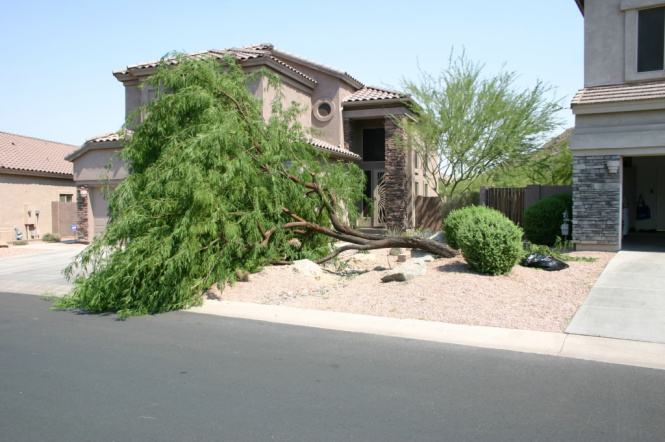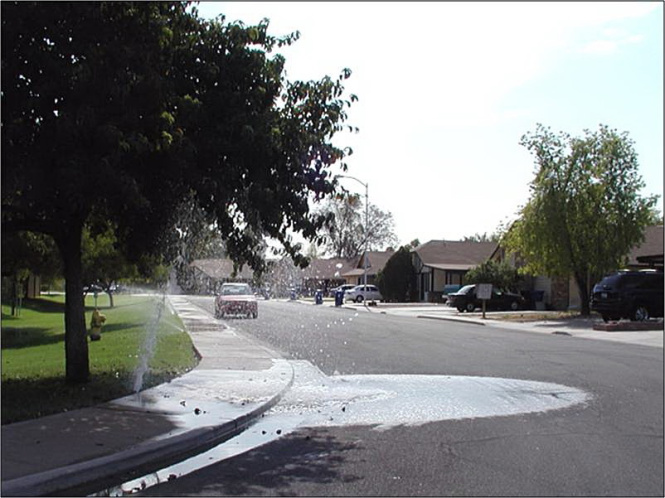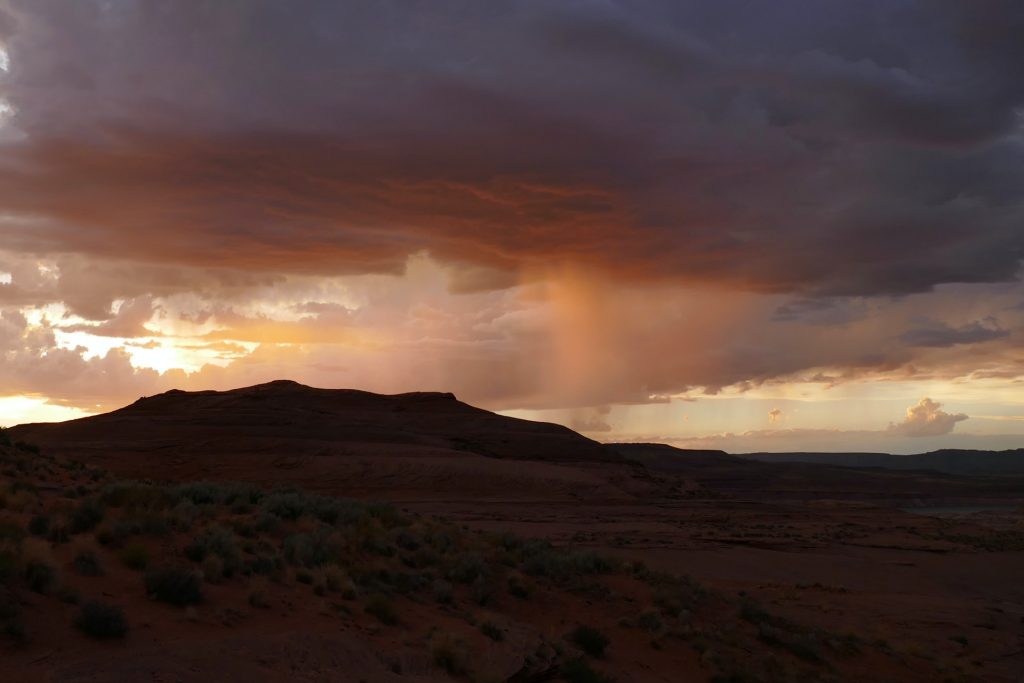We know, we know, we are in the middle of a “nonsoon.” But hear us out, it will happen (hopefully, one day, maybe soon, we hope…). Monsoon season in the Valley can be a great time of year for suddenly cooler temperatures and extraordinary sunsets, but it makes caring for desert landscapes a bit more mysterious. There’s more unusual weather than what we are used to, like humidity, dust, rain, and high winds. With the anticipation of monsoon activity, we asked conservation specialists about the five most common landscaping mistakes during the monsoon season. Here’s what they told us.
1. Watering too often.
With a concern of rising temperatures, some make the mistake of watering plants every day. Watering too frequently can keep the soil too moist and lead to rot, fungus, and other diseases. Plants thrive on monsoon humidity. They do better when you water less frequently but with deeper soakings, about 2 feet deep for shrubs and three feet for trees. (You can measure by sinking a pointed wooden stake into the ground.) Watering deeply and less frequently creates an underground reservoir of water for plants and trees that will not easily evaporate and will encourage healthy roots. Large desert trees do best with very little water during the summer. This discourages heavy top growth and soft wet soil, which makes it easier for them to uproot and fall over in high winds. When you do water trees, water out to the edge of the tree’s canopy. This gives trees a longer, deeper, and stronger root system to steady them in a storm. Landscape Watering by the Numbers offers you more precise information.
2. Wasting rainwater.
A half-inch of rain in your neighborhood is all you need to take advantage of rainwater. After receiving a half-inch of rain you can turn off your watering system, save money on your water bill, and feel good about watering your landscape. (Check out rainlog.org to see how much rain your neighborhood has received.)
Better yet, you also can contour your yard to help your plants and trees get the most out of each storm. Sunken areas (swales) and deep wells around your trees help to slow, spread out, and sink rainwater that would otherwise run off your property. It’s the simplest rainwater harvesting technique and takes nothing more than a shovel, a little energy, and thoughtful placement of plants.
Consider this: 1 inch of rain on a 1,000 square-foot roof produces 600 gallons of runoff. The Valley receives an average of 7 inches of rain a year. It makes sense to plant at the roofline and to build swales to direct runoff toward trees and plants.
3. Leaving trees without proper support.
Swaying in the wind can help young trees grow stronger. But the wind can also uproot them if they are not staked properly. To properly stake a tree use two stakes at least six inches from the trunk and gently attach them to the trunk with looped ties that allow the tree to sway in the wind. Allowing the tree to move with the wind creates a dense wood and strong trunk that will help keep mature trees standing despite the weather.
Established trees need to be properly pruned to stand up to monsoon winds. When it comes to pruning established trees to prepare for a storm, do not:
- Cut off lower limbs
- Top a tree (shear off the top)
- Cut it into an umbrella shape
- Aggressively thin a tree leaving excessive foliage on the end of branches

4. Applying herbicides during rainy weather.
Rain is rarely gentle during a monsoon. Hard and fast rain rushes across your yard carrying any herbicides you’ve applied. These herbicides are then carried into the streets. From there it flows into storm drains or catch basins, which are usually located along street curbs, and into storm drain pipes deep underground. Most of this untreated runoff empties directly into riverbeds, washes, and retention basins in city parks. Herbicides only add to the pollution the runoff carries with it.
You can learn more about the importance of stormwater at Stormwater Outreach for Regional Municipalities (STORM).
5. Abandoning an irrigation system.
If you’re the type that leaves town for the summer, we get it. No one can blame you for getting out of town for most of the summer. But be wary: many homeowners trust their yard to an automated irrigation controller. A storm that causes electrical issues can get your irrigation timer off schedule or even set your controller back to a default schedule (and sometimes cause irreparable damage). While the controller may be reliable, your pipes, sprinkler heads, and drip lines are less so.
Drip lines are particularly susceptible to weather. High temperatures, dust, and rain can clog, crack and break emitters and lines. If that happens, each time that reliable controller comes on plants won’t get watered or gallons of wasted water can pool in your yard. Pooling water gives mosquitoes a place to breed, wastes your money and everyone’s water. Grass and leaves also can clog sprinkler heads. If you leave for part or most of the summer, make sure a neighbor, friend, family member, or a gardener regularly walks your yard while the irrigation system is running and is prepared to spot and stop any leaks. AMWUA’s Smart Home Water Guide can help.

Enjoy the monsoon season along with your plants and trees and keep this in mind: the monsoon season means Fall weather is getting closer.
Find additional info in our past monsoon blogs:
- Prepare for Monsoon Season with These 5 Landscape Tips
- ABC’s of Monsoon Planting
- Save Your Trees from Monsoon Damage
This blog was originally posted on amwua.org in August 2016. The Arizona Municipal Water Users Association (AMWUA) is one of 20 Water – Use It Wisely partners to offer water-saving advice and programs. For 50 years, Arizona Municipal Water Users Association has worked to protect our member cities’ ability to provide assured, safe and sustainable water supplies to their communities. For more water information visit www.amwua.org.


